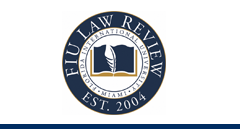Keywords
False Claims Act, qui tam action, United States Government, intervene, dismiss, and standard
Abstract
The False Claims Act was originally enacted during the Civil War as a result of concerns that the Union Army would attempt to defraud the Government. Since then, the False Claims Act has evolved and grown into an extremely useful tool that allows individuals to bring civil actions for various reasons on behalf of the United States Government. Under the False Claims Act, an individual may bring acivil action, often referred to as a qui tam action, on behalf of the United States Government for violations of the False Claims Act. After an individual brings this type of action, the Government may then decide whether to intervene as a party. Additionally, the Government has the right to decide whether to move to dismiss the action. As a result of the development of the False Claims Act and individuals’ bringing various qui tam actions, however, federal circuits have developed conflicting interpretations of what the appropriate standard should be when determining whether to grant a motion to dismiss filed by the Government. Multiple circuits, including the Ninth and Seventh circuits, have imposed standards that the Government must meet before obtaining a dismissal. In contrast, the D.C. Circuit has explained that the Government should not be required to meet any standard because the statute itself does not impose any standard. The Government should not be held to a judicially imposed standard when it decides to move to dismiss a qui tam action brought on its behalf.
Recommended Citation
Wallace Stage, Should the Government Have the Unrestricted Power To Dismiss Meritorious Qui Tam Actions Brought Under the False Claims Act?: A Closer Look at Why the Government Should Not be Held to a Judicially Imposed Standard, 16 FIU L. Rev. 857 (2022), https://doi.org/10.25148/lawrev.16.3.13.





